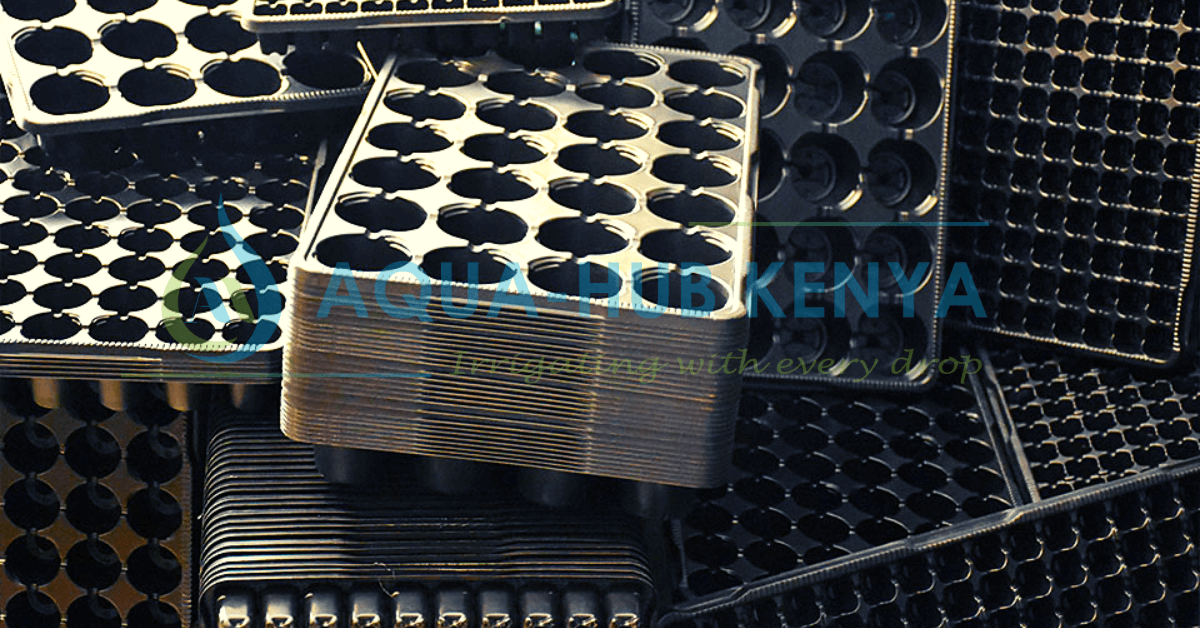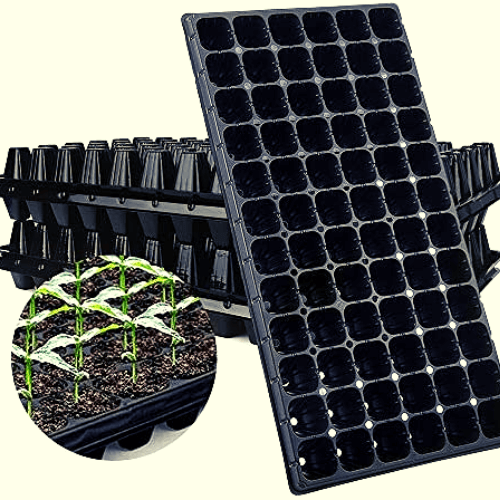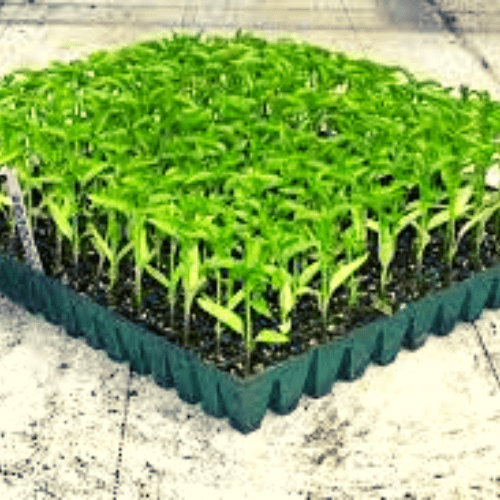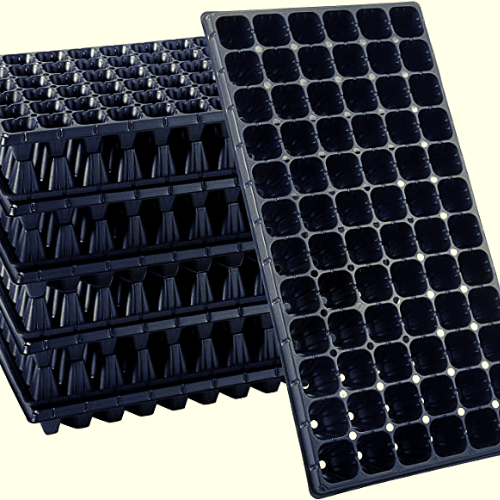Quality Seedling Trays in Kenya

Aqua Hub offers high-quality seedling trays in Kenya. We supply high-quality seedling trays, as well as seeds and cuttings, to satisfy your propagation needs. Growing plants from seed frequently yields stronger plants at a reduced cost. A seedling tray might help with germination if you wish to start seeds in quantity. Of course, when choosing a seed tray, there are several alternatives for the material, tray type, and number of cells. Our planting trays come in a variety of colors and forms, including black and white, while black is the most popular tray color.

Our planting trays include capacities of 50 cells, 66 cells, 78 cells, 128 cells, 200 cells, and 288 cells. They are 11 inches broad by 21.22 inches long. They are made from UV-treated materials, so they may be easily recycled after being transplanted. Vegetables, tree seedlings, and other items can be grown in them. These planting trays are a state-of-the-art method of propagation that works in any environment. Most commonly, these items are applicable in nursery propagation in greenhouses or shade structures. Our seedling trays also make it possible for farmers who are now reliant on agriculture to take seedling growth and survival into account.
What are the suitable crops for Seedling trays?
Seedling trays can be applicable to grow a variety of crops, including vegetables, herbs, and flowers. Some examples of suitable crops for seedling trays include tomatoes, peppers, cucumbers, eggplants, lettuce, spinach, kale, broccoli, cauliflower, cabbage, radishes, carrots, beets, onions, leeks, chives, parsley, basil, cilantro, dill, thyme, oregano, marjoram, and lavender. It is important to note that different plants have different requirements for light, moisture, and temperature, so it is also essential to research the specific needs of the crop you plan to grow before starting.
What is the cost of quality seedling trays in Kenya?
The cost of quality seedling trays can vary depending on the size, material, and quantity purchased. Typically, plastic trays with cells for individual seedlings can range from Ksh 140. The trays also have different cells, though the prices are the same.
| Number of cells | Cost |
| 50 | 140 |
| 72 | 140 |
| 128 | 140 |
| 200 | 140 |
| 288 | 140 |
Why is seedling trays best for germination of seedlings?
Seedling trays are commonly for germinating seedlings because they provide a controlled environment for the seeds to grow. The trays have cells that are the perfect size for individual seedlings, which allows them to grow in a contained space without becoming overcrowded. This helps to promote healthy growth and reduces the risk of disease. The trays also make it easy to transplant seedlings to a larger container or to a garden bed once they are big enough. Additionally, seedling trays are often of plastic, which is lightweight and easy to handle, and can be reusable which is cost-effective.
What is the capacity of seedling trays?

The capacity of seedling trays can vary depending on the size and design of the tray. Some seedling trays are designed to hold a specific number of seedlings, such as a tray with 36 or 72 cells for individual seedlings. Other trays, such as those without cells, may have a larger capacity and can hold more seedlings. The standard size for seedling trays are usually around 10×20 inches and can hold around 50 to 200 seedlings depending on the size of the cell. However, larger trays can be found, and smaller trays can also be found, with the capacity accordingly adjusted. It’s also important to consider the capacity of the seedling tray when purchasing, as this will help ensure that you have enough space for all of your seedlings to grow.
What is the depth of seedling trays?
The depth of seedling trays can vary depending on the type of tray and the size of the cells. For seedling trays that have cells for individual seedlings, the depth of each cell is typically between 1/2 inch and 1 inch. This depth allows the seedling to develop a strong root system without becoming overcrowded. A normal seed tray has a depth of 2 to 2.5 inches. It is doubtful that cells deeper than 3 inches will be needed. For seedling trays without cells, the depth can be deeper, usually around 2 to 3 inches, to allow for more soil and root growth for the seedling.
It’s important to note that the depth of the tray also depends on the type of seed you are germinating. Some seeds require deeper trays than others, so it’s best to check the recommended depth for the specific seed you are planning to grow before purchasing a tray. In general, the deeper the tray, the more soil it can hold, which can be beneficial for seedling growth. However, it also means more weight and can be difficult to handle.
What are the parts of seedling trays?

The parts of seedling trays can vary depending on the design of the tray, but most seedling trays have the following basic components:
- Tray base: The bottom part of the tray where the soil and seedlings are placed. It can be made of plastic, metal, or other materials.
- Cells or cavities: Individual compartments in the tray that hold soil and seeds. These can be round or square in shape, and are typically uniform in size.
- Drainage holes: Holes at the bottom of the tray that allow excess water to drain away.
- Clear lid: A clear plastic cover that sits on top of the tray, which helps to maintain humidity and temperature for germinating seeds.
- Handles: Some seedling trays have built-in handles for easy transport and handling.
- Rounded edges: Some seedling trays have rounded edges which makes it easy to remove seedlings from cells.
Some seedling trays may also include additional features, such as a water reservoir or a tray that allows for bottom watering. It’s also important to note that some seedling trays are made of biodegradable materials that can be used as seed starting containers, these trays are designed to decompose after some time and can be planted directly in the soil.
